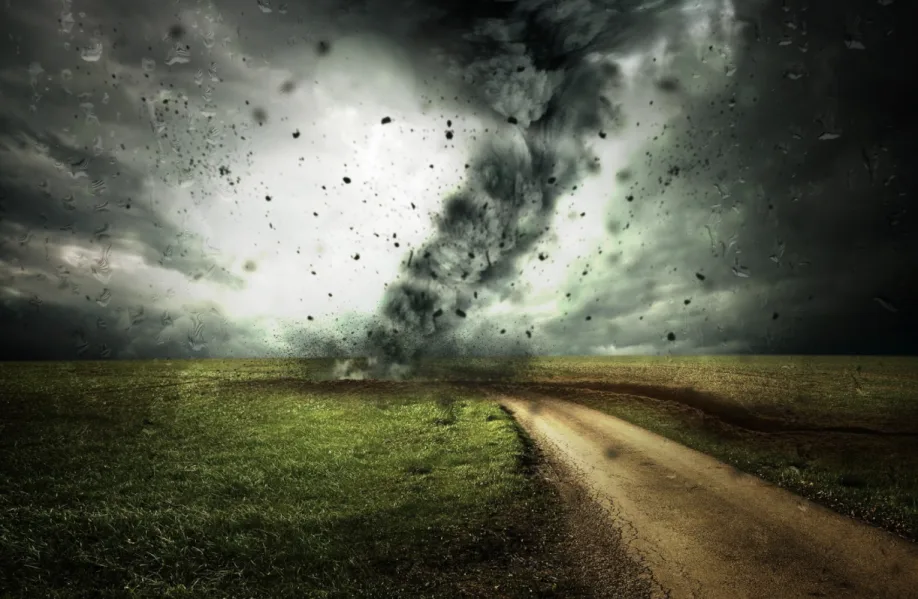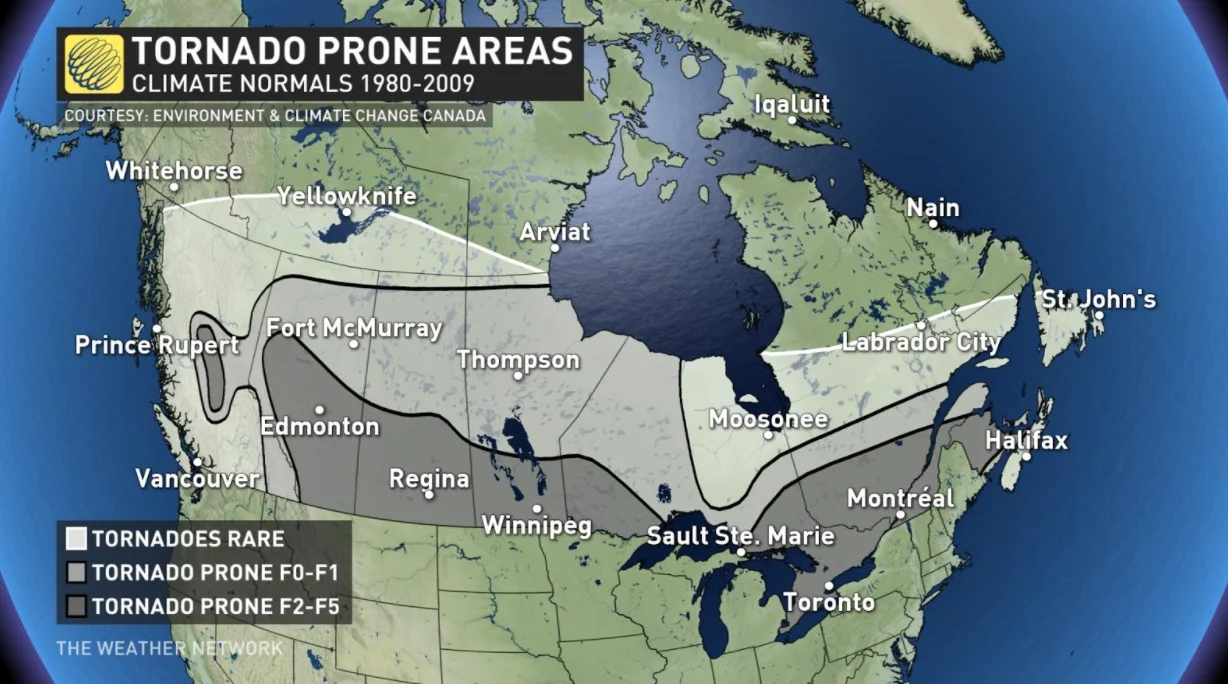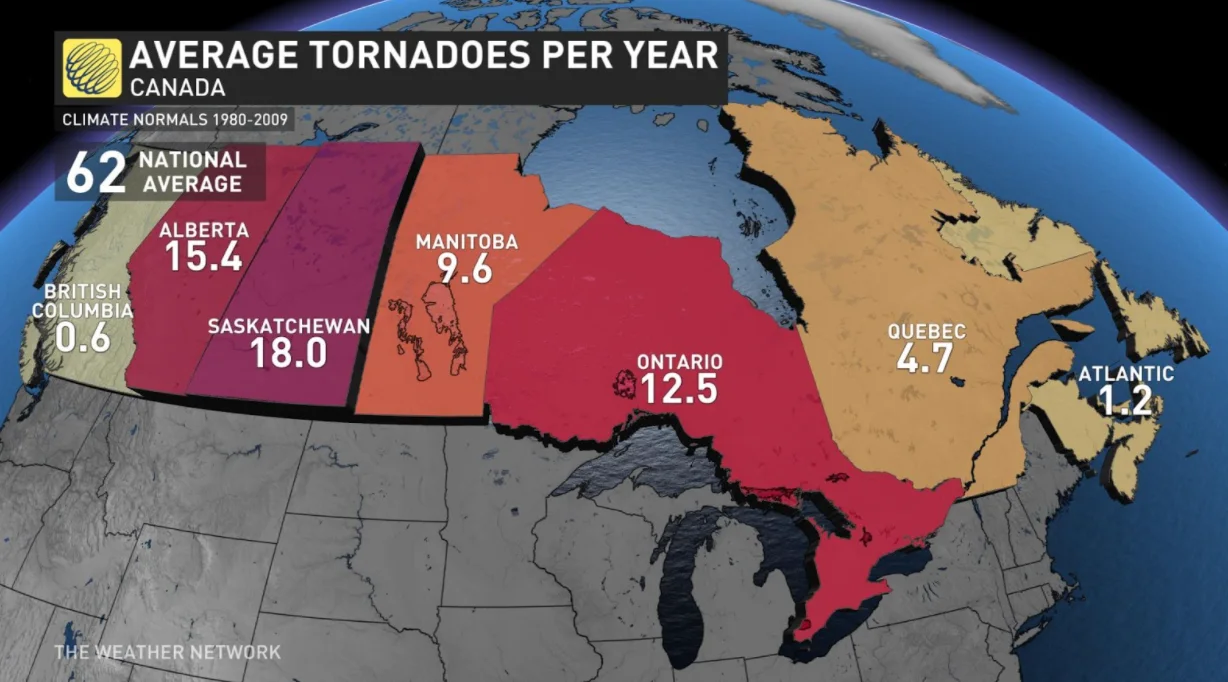
A rare New Brunswick tornado is Canada's 10th deadliest
This Day In Weather History is a daily podcast by Chris Mei from The Weather Network, featuring stories about people, communities and events and how weather impacted them.
--
On Wednesday, Aug. 6, 1879, a tornado hit the town of Bouctouche, N.B. It's Canada's 10th deadliest tornado. Bouctouche is located at the mouth of the Bouctouche River, around 40 km northeast of Moncton.
The tornado killed five people and injured 10 others. Though the Fujita scale was introduced in 1971, it's estimated that the Bouctouche tornado was an F3 in strength.
It's also estimated that the Bouctouche twister is the easternmost major tornado in North America, especially the most powerful one. Weaker tornadoes and waterspouts have been spotted in Prince Edward Island and Nova Scotia.

Each year, Canada gets approximately 80 tornadoes, but most occur in southern Ontario, southern Quebec, and the southern Prairies.
On average, Ontario, Alberta, Manitoba, and Saskatchewan receive between 8 and 14 tornadoes each year. Quebec gets around 4–10 during the tornado season. And then comes New Brunswick. On average, all of Atlantic Canada gets hit with 1.2 tornadoes per year.

In Canada, fewer than five per cent of twisters have been rated EF-/F3 or higher, which equates to a minimum of 225 km/h wind speeds.
So the Bouctouche event is an extremely rare tornado. Canada's deadliest tornado occurred in the much more twister-vulnerable Regina, Sask. The tornado hit the city on June 30, 1912, killing 28 people and injuring hundreds more.
To learn more about the Bouctouche tornado, listen to today's episode of "This Day In Weather History."
Subscribe to 'This Day in Weather History': Apple Podcasts | Amazon Alexa | Google Assistant | Spotify | Google Podcasts | iHeartRadio | Overcast'





